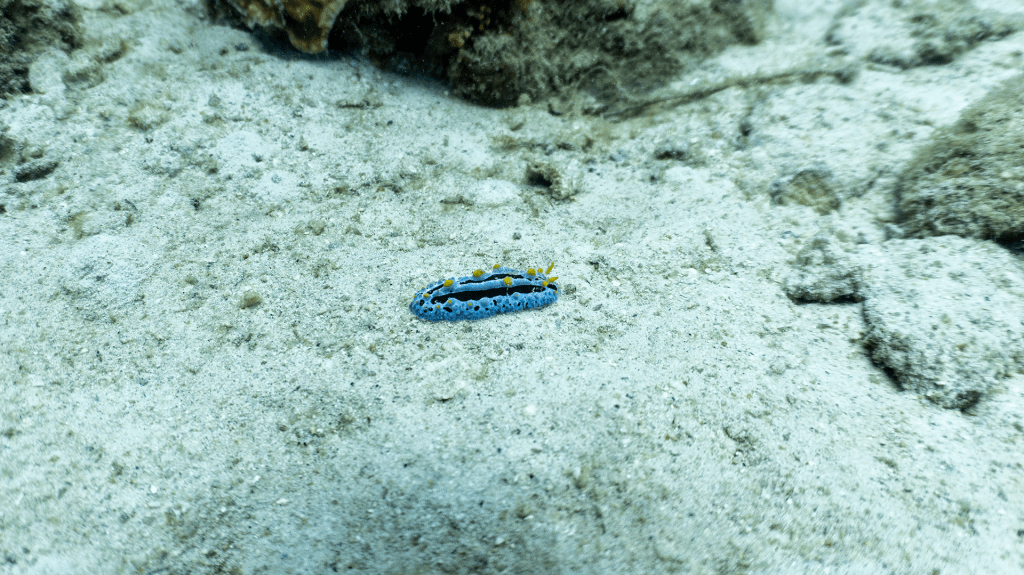Phyllidia coelestis

The celestial phyllidia (Phyllidia coelestis) is a species of marine nudibranch belonging to the family Phyllidiidae.
This mollusk has an oval-shaped body that can grow up to 6 cm in length. Its coloration features a grayish-blue base with three longitudinal black stripes: two running along the sides and a central one forming a Y-shaped pattern in front of the sensory organs, known as rhinophores. These small projections on the head help the mollusk detect chemical cues in the water. The dorsal surface is covered in bright yellow tubercles, and the rhinophores themselves are also yellow, consisting of numerous fine lamellae that enhance their sensitivity.
The celestial phyllidia primarily feeds on sponges, extracting nutrients from them. Unlike many other mollusks, it lacks both a radula (a toothed tongue) and jaws—an anatomical trait characteristic of all members of the Phyllidiidae family.
Like other nudibranchs, this species is a hermaphrodite, meaning each individual possesses both male and female reproductive organs. During mating, partners exchange spermatophores—capsules containing sperm. After fertilization, each lays eggs, from which larvae eventually hatch.
Phyllidia coelestis is found in the warm waters of the Indo-Pacific region, including the western Pacific Ocean, the South China Sea, the Timor Sea, and the Indian Ocean, extending as far as South Africa. It inhabits coral reefs, residing on reef crests, outer slopes, and in lagoons at depths of up to 30 meters.
This nudibranch is a bottom-dwelling species that is most active during the day. Its vivid coloration allows it to move freely across reefs without fear of predators. The toxic compounds in its body make it inedible, while its striking colors serve as a warning to potential threats.
